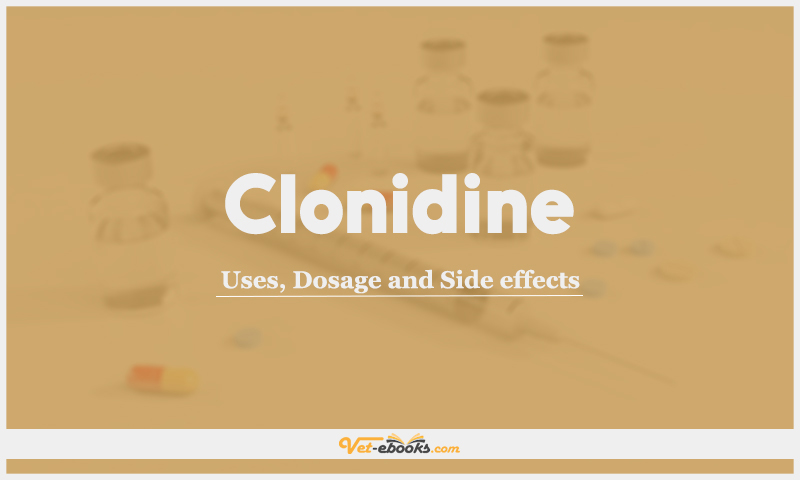Clonidine: Uses, Dosage and Side Effects

Overview
Stimulates the secretion of growth hormone-releasing hormone (GHRH) from the hypothalamus.
Uses of Clonidine
- Used for a diagnostic test in patients suspected of pituitary dwarfism (hyposomatotropism) to assess the pituitary’s ability to produce growth hormone (GH).
- Assessment of plasma insulin-like growth factor-1 (IGF-1) concentration in a single
sample is a useful screening test for growth hormone disorders. - Used in dogs to control panic-like responses and fear-based behavioral problems.
Dose of Clonidine in Dogs and Cats
Dogs:
- Growth hormone stimulation: 3–10 μg (micrograms)/kg i.v. once.
- Behavioral modification: 0.01–0.05 mg/kg as needed up to q12h (often with food).
Cats:
- No information is available.
Drug Dosage Calculator
You Should Give:
Side Effects of Clonidine in Dogs and Cats
- Transient sedation and bradycardia may develop.
Contraindications of Clonidine in Dogs and Cats
- Use very cautiously in animals with renal or cardiovascular disease.
Some Notes:
- The effect develops in about 30 minutes and lasts for 3–4 hours, so often needs to be used tactically (prn).
- Can be used over a longer term but may take 1–2 weeks to see a full response.
- Withdrawal must be done gradually to avoid hypertension.
- Care should be exercised when using with drugs that also lower blood pressure or heart rate.
- Should not be used concurrently with barbiturates, opiates or hypotensive agents, (e.g. beta-blockers)
Tip
Do You Want To Increase Your Veterinary Knowledge and Practical Skills?
You Can Now Browse and Download +3000 Books For Veterinary Professionals & Students Online.
Download Veterinary Books




















